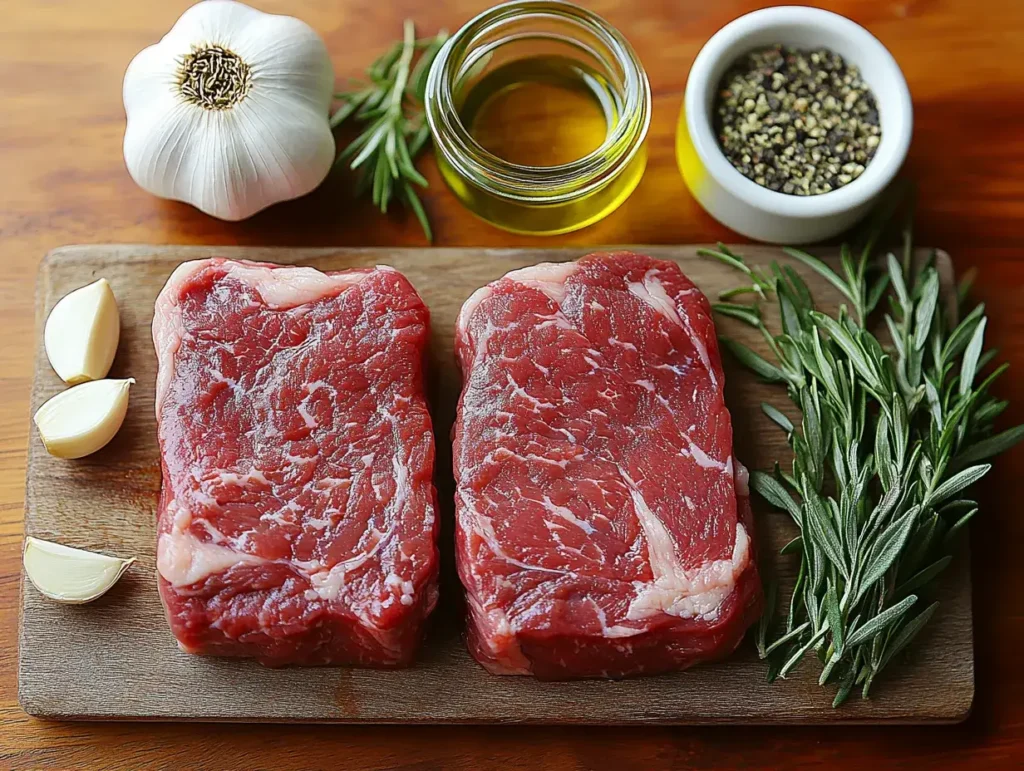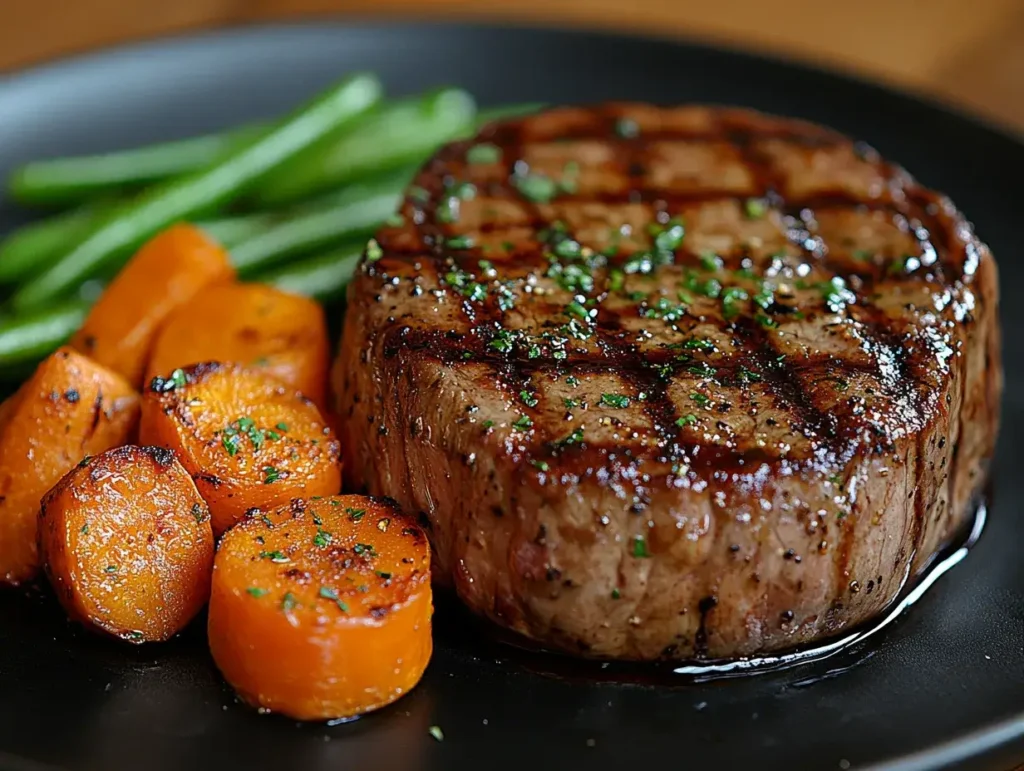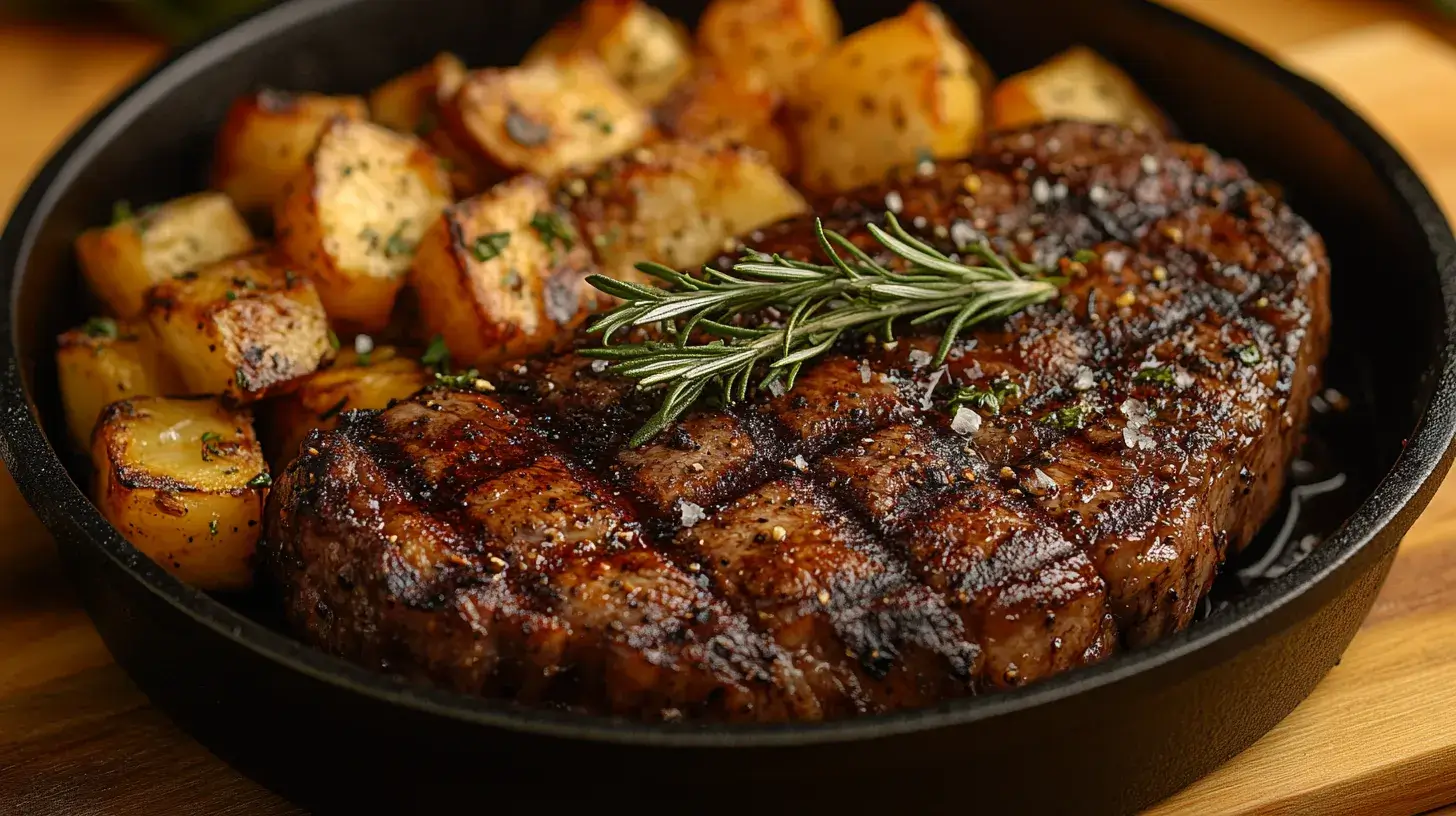You’re standing at the meat counter, eyeing each package with both excitement and caution. Something about beef petite sirloin steak draws your attention. The cut looks lean yet promising, and you can almost imagine that mouthwatering sizzle once it hits the pan. At first glance, you might wonder if it’s worth adding to your cart. After all, there are so many steak varieties out there. Nevertheless, the price tag and moderate size make this particular steak seem like a great option for a weeknight dinner or even a special gathering.
If you’ve ever been curious about turning a lean steak cut into a show-stopping meal, you’ve come to the right place. In the next few paragraphs, you’ll discover exactly why beef petite sirloin steak has captured the hearts of both kitchen novices and seasoned home cooks. You’ll learn what makes it special, how to pick the best cut, and how to cook it so it’s flavorful in every bite. By the end, you’ll feel confident in serving this juicy, tender steak to friends, loved ones, or even just yourself after a long day. So, slip on your apron. Let’s dive into the world of one of the most underrated cuts of beef.
Understanding Beef Petite Sirloin Steak
Definition & Origin
You might be asking: What exactly is beef petite sirloin steak? Essentially, it’s a segment carved from the sirloin primal, sitting just behind the loin region. It’s notably smaller than typical sirloin cuts, which is why it often carries the name “petite.” Despite its more modest size, this lean beef cut generally presents a robust flavor. You’ll find it to be quite satisfying, albeit not as fatty as certain premium steaks.
Moreover, the history behind the sirloin section traces back to old-school butchering traditions. Traditionally, the sirloin primal was broken down into top sirloin, bottom sirloin, and a handful of smaller cuts—like this petite sirloin. Because it’s leaner, you might need to pay attention to cooking methods that infuse moisture and maintain tenderness. If you’d like a more detailed look into how beef cuts are categorized, you can check out the official USDA guide on general meat labeling. It explains the broad categories of each primal region.
Texture & Flavor Profile
Beef petite sirloin steak doesn’t carry the same degree of marbling that you’d see in a ribeye or New York strip. Consequently, it’s essential to follow cooking tips that ensure it stays tender. You’ll notice a hearty bite that, when cooked right, yields a juicy texture. Indeed, marinating or seasoning well can amplify its natural taste.
Comparatively, some folks sense a mild beefiness similar to top sirloin. Tender petite sirloin might not melt in your mouth in the same way as a more expensive steak, yet it can still become a succulent meal with minimal effort. In addition, you’ll discover that it pairs nicely with strong flavors like garlic, soy sauce, or dried herbs.
Why It’s Popular
There are many reasons this specific steak is gaining traction. First and foremost, it tends to be more budget-friendly than certain high-end cuts. Furthermore, it’s versatile—you can grill it, pan-sear it, or even toss it in the oven if you prefer a more hands-off method. Additionally, it’s available in most grocery stores, which makes it convenient when you’re looking for a quick dinner idea.
- Cost-Effective: You get a solid portion of lean protein for a respectable price.
- Moderately Easy to Find: Most supermarkets carry some form of petite sirloin.
- Cooks Quickly: The smaller size shortens steak cooking times.
Overall, beef petite sirloin steak hits the sweet spot between affordability and taste. If you’re striving to eat better or simply expand your steak repertoire, this cut deserves a place in your kitchen. For additional inspiration, you can see how professional chefs handle lean sirloin cuts on the BBC Good Food site, which often shares practical cooking suggestions.
How to Choose the Perfect Beef Petite Sirloin Steak
Color & Freshness
When you head to your local store, pay attention to color. Look for a vibrant, dark-red hue without excessive browning around the edges. Equally, the packaging should be intact, with no leaks or unpleasant odors. Before placing the steak in your cart, double-check the sell-by date. Likewise, keep an eye on any discount stickers. Occasionally, you can snag a top-notch steak at a bargain price right before its expiry date—just be sure to cook it sooner rather than later.
Furthermore, observe the texture if the package allows. Any slimy residue or questionable smell indicates you should probably pass. Essentially, you want a steak that looks firm, fresh, and appealing, ensuring you begin with the best possible starting point.
Marbling & Thickness
Because beef petite sirloin steak is quite lean, you won’t see large streaks of intramuscular fat. Nevertheless, a bit of fine marbling can promote extra moisture during cooking. The thickness often ranges between an inch to an inch and a half. If it’s thicker, you might need to adjust cooking times accordingly. Conversely, a thinner cut will cook more swiftly but may risk overcooking if not watched carefully.
When in doubt, talk to the butcher if one is available. They usually know a great deal about the day’s fresh supply, and they can even help you pick a piece that suits your cooking style. Comparatively, that personal touch sometimes leads to the best flavor outcome.
Organic vs. Conventional
Some individuals prefer organic beef for peace of mind, while others find conventional cuts to be more budget-friendly. Generally, this choice comes down to your preferences and dietary priorities. Nevertheless, don’t assume organic always means superior taste. It just offers certain assurances about feed quality and farming practices.
If you’re trying to decide, weigh factors like cost, availability, and your personal stance on pesticides or hormones. Undoubtedly, you can create a delicious meal with either choice, provided you follow the right techniques.
Storage Guidelines
You’ll want to handle your steak properly, especially if you’re not cooking it the same day. Place it in the coldest part of your refrigerator for up to two days. If you’re planning a meal further down the line, freeze it in airtight packaging to maintain freshness. Markedly, wrapping the steak in a layer of plastic wrap and then a freezer-safe bag reduces the risk of freezer burn.
When you’re ready to use it, allow it to thaw safely in the fridge. Previously, some folks thawed meat on the counter, but that’s risky for bacteria growth. Thawing in the fridge keeps the temperature consistent and safer for consumption.
Flavorful Ways to Cook Beef Petite Sirloin Steak
Essential Cooking Methods
There are plenty of ways to cook this nutritious lean cut. However, the following methods shine in terms of convenience and flavor:
- Pan-Seared: If you love a crusty exterior, pan-searing is your friend. Preheat a cast-iron skillet, add oil, and let it shimmer. Gently place your steak inside, hearing that sizzle that tells you it’s browning properly. Afterward, flip once a crust forms, surely about 2–3 minutes per side.
- Grilling: For a smoky essence, toss your beef petite sirloin steak on a hot grill. Brush the grates with oil to prevent sticking. Keep an eye on your timing—generally, 3–4 minutes per side yields a medium-rare center, though it also depends on thickness. Stick a thermometer in the thickest part if you want to be certain.
- Oven-Roasting: If your cut is on the thicker side, consider oven-roasting. Firstly, sear it on the stove to lock in juices, then transfer it to a preheated oven (around 400°F) for a few minutes to finish cooking. Eventually, this method keeps the interior juicy while still giving you an appealing crust.
Want more quick ways to prepare dinners? Check out How To Make Beef Bottom Round Steak Tender And Juicy Every Time
Steak Doneness & Internal Temps
It’s crucial to pay attention to steak cooking times, especially when dealing with a lean cut:
- Rare: 125°F (52°C)
- Medium-Rare: 130°F (54°C)
- Medium: 140°F (60°C)
Insert a digital meat thermometer into the steak’s center to verify. Then, let it rest for a few minutes before slicing. Resting your steak prevents juices from spilling out prematurely. You’ll thank yourself when each slice tastes moist and succulent.
Beef Petite Sirloin Steak Marinade & Seasoning Tips

Marinating is often the key to success with any tender petite sirloin, especially if you want extra flavor. A quick marinade might include olive oil, garlic, soy sauce, and a splash of vinegar. Altogether, the acidic component helps tenderize the muscle fibers, while the oil keeps things from drying out.
Suggested Basic Marinade
- 2 Tbsp olive oil
- 1 tsp garlic powder
- 1/2 tsp black pepper
- 1 tsp sea salt
- 1 Tbsp Worcestershire sauce
Moreover, you can throw in dried herbs like rosemary or thyme if you enjoy earthy flavors. Let the steak soak for at least 30 minutes—any longer, and the marinade can penetrate more deeply.
Table: Quick Marinade Ingredients
| Ingredient | Amount | Notes |
|---|---|---|
| Olive Oil | 2 tbsp | Adds moisture, mild flavor |
| Garlic Powder | 1 tsp | Boosts savory depth |
| Black Pepper | 1/2 tsp | Provides gentle heat |
| Sea Salt | 1 tsp | Balances overall taste |
| Worcestershire Sauce | 1 tbsp | Contributes tangy richness |
After mixing these, coat the steak evenly. Afterwards, pat it dry before cooking to help it sear. If you leave the surface too wet, you may not get that brown crust everyone craves. Nevertheless, do keep a slight film of oil on the meat to reduce sticking in the pan or on the grill.
Nutritional Benefits of Beef Petite Sirloin Steak
Lean Protein Source
Beef petite sirloin steak is typically a leaner choice. Because of its lower fat content, it’s suitable for those who watch their intake yet still crave red meat’s taste. A single serving often packs a punch of high-quality protein essential for muscle building and repair. It’s surely a more nutritious option if you’re trying to balance macros.
Vitamins & Minerals
You’ll find that this lean steak cut also brings key vitamins like B12 and B6 to the table, equally beneficial for energy production and nervous system health. Iron and zinc, two critical minerals, contribute to immunity and oxygen transport. Indeed, incorporating moderate portions of beef petite sirloin steak can help you maintain a balanced meal plan.
- Iron: Supports hemoglobin function, helping deliver oxygen to cells.
- Zinc: Aids immune system activity and wound healing.
- Vitamin B12: Vital for red blood cell formation, particularly in preventing certain forms of anemia.
Calorie & Fat Content
When you look at the label, you may see that a typical 3–4 ounce serving hovers around 150–180 calories, depending on how much visible fat remains. That’s modest compared to fattier cuts like ribeye or T-bone. If you’re cutting calories or simply prefer a less fatty meal, petite sirloin hits a sweet spot. Just remember to watch your portion size because adding sides, sauces, and garnishes can ramp up the total calorie count.
Healthier Cooking Methods
Grilling, broiling, or pan-searing in minimal oil are often considered the best ways to keep your meal wholesome. Avoid deep-frying or drenching the steak in heavy creams. Surely, if you do want a rich sauce, you can whip up a light mushroom gravy or a simple red wine reduction instead. That way, you remain in control of added fats and flavors.
Serving Suggestions & Storage Tips for Beef Petite Sirloin Steak

Sides & Pairings
Sometimes, you want a complete meal that truly highlights the tender petite sirloin on your plate. You might pair it with roasted asparagus or a fresh spinach salad. Alternatively, mashed potatoes deliver a comforting touch. For a lighter option, consider grilled zucchini or bell peppers.
- Roasted Veggies: Carrots, Brussels sprouts, sweet potatoes
- Classic Sides: Mashed potatoes, mac & cheese, or a baked potato
- Healthy Greens: Spinach salad, kale, or sautéed mushrooms
Surely, these pairings accentuate the savory notes of your steak. You could also add a splash of lemon juice or a sprinkle of chopped parsley at the end for an extra flavor lift.
Leftover Ideas
If you end up with extra slices, you can repurpose them in countless ways. Chop them into cubes for a quick stir-fry. Slice them thin for a steak sandwich with onions and peppers. Or lay them atop a hearty salad for a protein-packed lunch. You can find more leftover-friendly recipes on our site at Quickmealsrecipes – Leftover Creations.
Stored properly in the fridge, leftover steak stays good for about two to three days. Subsequently, you can freeze it for up to two months if you want to use it in stews or soups later on.
Storage & Reheating Best Practices
Use airtight containers or wrap your steak in foil. Place it in the refrigerator if you plan on consuming it soon. If you wish to freeze it, use freezer-safe ziplock bags and label them with the date. When reheating, opt for low heat. You can warm it in a skillet with a touch of broth or in an oven set at around 300°F. This gentle approach helps retain moisture. Likewise, zapping it in the microwave can sometimes cause it to become rubbery, so be cautious if you choose that route.
Table: Simple Steak Meal Plan
| Day | Meal | Notes |
|---|---|---|
| Monday | Petite sirloin with roasted vegetables | Lean approach, quick to prepare |
| Tuesday | Steak sandwich with sautéed onions | Great for lunch, add melted cheese if desired |
| Wednesday | Stir-fry with petite sirloin strips | Balanced with rice or noodles |
Using a meal plan like this ensures that you don’t waste your beef petite sirloin steak. You’ll keep variety in your dinners and lunches, consequently making the most of your grocery budget.
Conclusion
Now that you’ve had a closer look at the ins and outs of beef petite sirloin steak, you’re primed to create a memorable meal without breaking the bank. This particular cut brings you a lean, cost-effective way to enjoy that classic steak experience. Surely, you can harness its potential by focusing on proper selection, mindful cooking methods, and strategic seasoning. So, gather your favorite marinades, warm up your skillet or grill, and let the aroma of a perfectly cooked sirloin fill your kitchen.
FAQ: Beef Petite Sirloin Steak
1. How to cook beef petite sirloin steak?
Beef petite sirloin steak is lean yet flavorful. You can season it with salt, pepper, and garlic powder, then either grill or pan-sear it over medium-high heat for 2–3 minutes per side. To finish, let it rest for a few minutes so the juices redistribute before serving.
2. What is beef petite sirloin steak?
Beef petite sirloin steak is a smaller, leaner cut from the larger sirloin primal. It offers robust beefy flavor with less marbling than other sirloin cuts, making it a budget-friendly yet satisfying choice for quick meals.
3. How to cook beef petite sirloin steak in the oven?
To cook beef petite sirloin steak in the oven, start by searing it on the stovetop for about 2 minutes per side to form a crust. Then, transfer the steak to a preheated oven at 400°F (200°C). Cook for 5–10 minutes (depending on thickness) until it reaches your preferred doneness. Rest it for 5 minutes before slicing.
4. Aldi USDA Choice Black Angus Beef Petite Sirloin Steaks Pack
Aldi’s USDA Choice Black Angus beef petite sirloin steaks come pre-packaged, typically in vacuum-sealed packs. They’re known for their tenderness and affordability. Since each pack is portioned, you can easily season, marinate, or cook them in various ways—grilling, broiling, or pan-searing—to enjoy a lean, savory meal.

